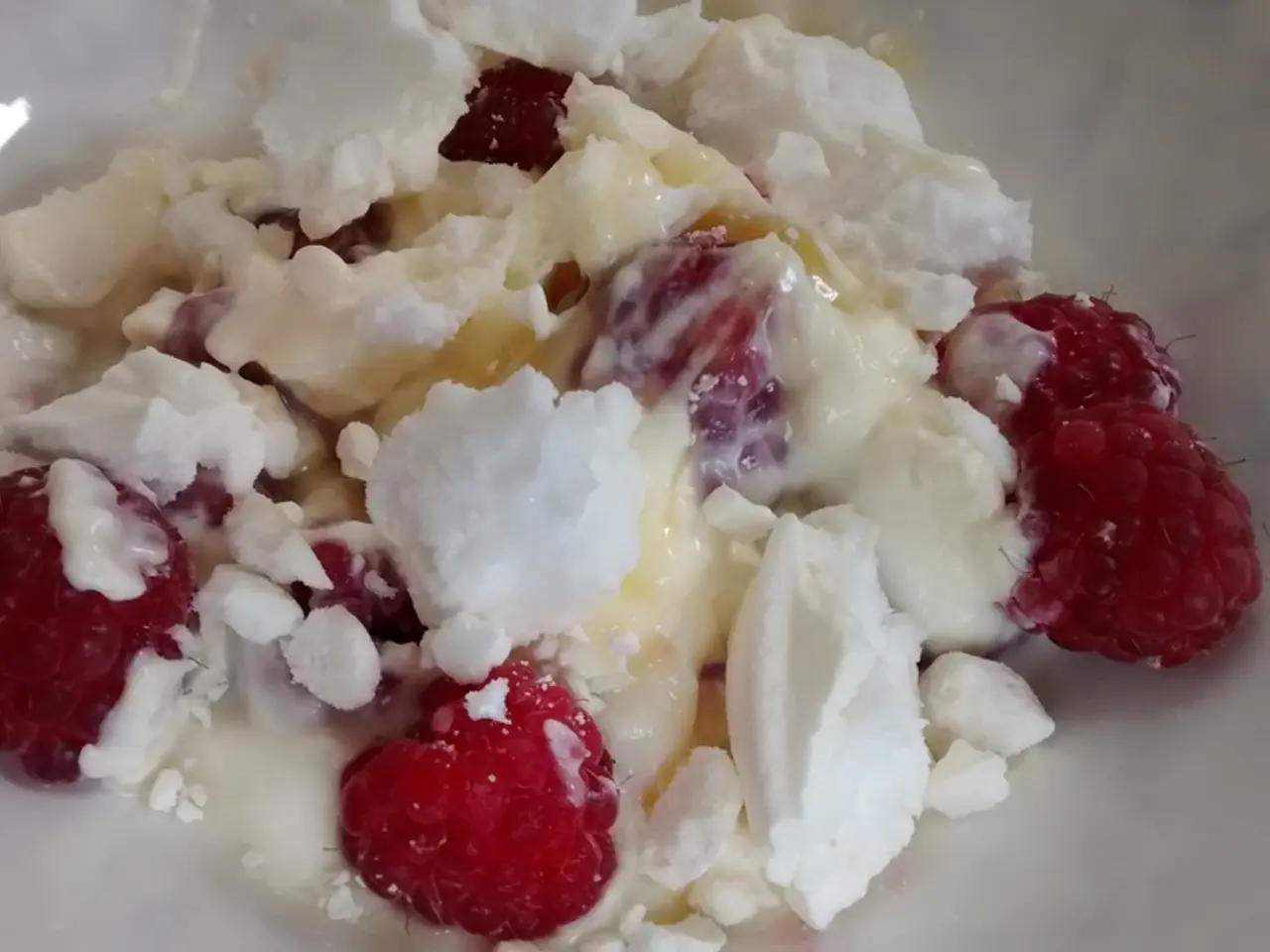Fermented Beverage from Fruits
Fruit Kvass, a popular beverage hailing from Eastern Europe, has been a staple in many households for centuries. This traditional drink, as detailed in the 19th-century book "A Gift to Young Housewives," is made through a unique fermentation process that transforms fruit into a slightly viscous, sweet, and sour liquid.
The process begins by fermenting fruit in lukewarm preboiled water. Natural bacteria convert the sugars in the fruit into acids like lactic and acetic acid, creating the characteristic sour taste. Berries, water, salt, and honey are the key ingredients in this recipe, though frozen fruit can be used in place of fresh.
Fermentation, which typically takes several days (about 2–5 days), occurs without the use of bread as a fermentation catalyst. To speed up the process, using a starter culture is optional but can introduce specific strains of beneficial bacteria.
As the fermentation progresses, the drink becomes naturally fizzy if fermented in a tightly sealed jar. It's important to note that consuming kvass should be done slowly if you're not accustomed to fermented foods.
Fruit gives the kvass its flavour and a vivid colour. This traditional method of making fruit kvass results in a drink rich in beneficial bacteria, specifically Lactobacillus casei, Leuconostoc mesenteroides, and Saccharomyces cerevisiae. These probiotics are known to support cellular health and combat inflammation.
Once fermented, the kvass is strained and ready to serve. After straining, it can be poured into a flip-top bottle and allowed to continue fermenting at room temperature for an additional day without burping. Kvass made from berries is called Moscow Kvass.
Kvass can contain up to 2.5% alcohol by volume after extended fermentation, but following the fermentation process and checking for a pleasantly sour and fruity smell, no visible mold, and a PH of less than 4.5 ensures it is made safely.
Salt provides a touch of electrolytes and supports fermentation, while honey feeds the beneficial bacteria that transform fruit and water into kvass. The finished product is a refreshing, probiotic-rich drink that can be stored in a bottle in the fridge and will last up to a week.
Fruit kvass is not only a delicious beverage but also a versatile ingredient. It can be used in dishes like borscht as a beet sour. Other summer drinks such as Bread Kvass, Tepache de Piña, Strawberry Smash, and Beet Kvass offer further variations on this traditional recipe.
Whether enjoyed as a standalone drink or used to enhance the flavour of dishes, fruit kvass is a delightful addition to any summer menu. So why not give it a try and experience the unique taste and health benefits of this traditional Eastern European drink?
- Fruit, salt, honey, and water are key ingredients in the traditional fermentation process of making Fruit Kvass, a beverage known for its unique taste and health benefits.
- The science of fermentation converts the sugars in fruit into acids like lactic and acetic acid during the fermentation process, resulting in the drink's characteristic sour taste.
- Fruit kvass, a popular choice in health-and-wellness and food-and-drink circles, is rich in beneficial probiotics such as Lactobacillus casei, Leuconostoc mesenteroides, and Saccharomyces cerevisiae, which support cellular health and combat inflammation.
- Cooking and home-brewing enthusiasts will find the process of making fruit kvass an interesting addition to their nutrition and healthy-cooking routines, offering a refreshing, probiotic-rich drink for fitness-and-exercise or as part of a balanced lifestyle.
- After fermenting, Straining the kvass and serving it chilled makes for a perfect summer refreshment, while its versatility allows it to be used as an ingredient in various food-and-drink recipes, such as borscht and other summer drinks like Bread Kvass, Tepache de Piña, Strawberry Smash, and Beet Kvass.




